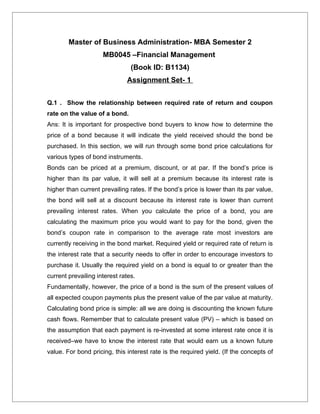The document discusses bond pricing and provides examples of calculating bond prices. It begins by explaining that a bond's price is determined by comparing its coupon rate to prevailing interest rates. It then provides the basic bond pricing formula and explains how to calculate the price of a bond using present value calculations and discounting future cash flows. The document also discusses accounting for different payment frequencies in the pricing formula.







